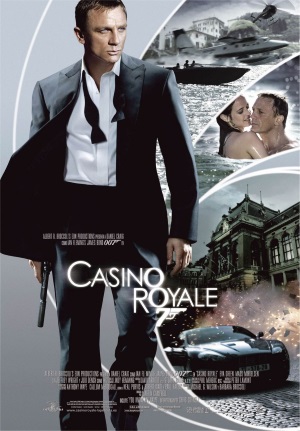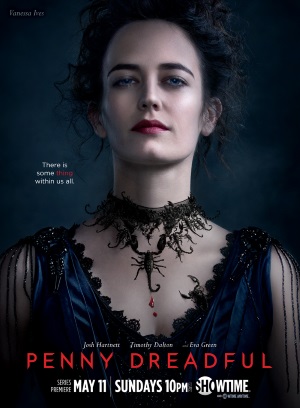Evergreen: “Casino Royale”
Last updated on 30 December 2020.
Today I’ll discuss Casino Royale (2006), the 21st James Bond movie (depending on how you count them) and one of my favourite movies. For me it’s truly an evergreen — I can watch it time and time again and in fact, I’ve done so. Especially the dinner scene in the train, but we’ll get to that later.
I’ve written about Casino Royale before, as it appeared in my article on my Best Of list for 2006. While that article has mostly stood the test of time, it was written in Dutch so I have an excuse to gush about this movie again.
Any James Bond movie comes with the weight of the many instalments before it, and Casino Royale was no different. It was the follow-up to the reviled Die Another Day (2002), a CGI-heavy action fest that was the last movie with Pierce Brosnan as the British spy. Mr. Brosnan was supposed to do one more Bond movie, to be released in 2004, but that never materialised.


Afterwards Daniel Craig was announced as the next Bond, to the chagrin of the internets. “James Blonde” was too short, too ugly, too blonde, too blunt to be the tall, dark and handsome icon. It was easy to see where those complaints were coming from, but I had some faith in the casting after seeing Craig in Munich and Layer Cake. Moreover, after Die Another Day I was ready for something new.
Casino Royale took advantage of the change of lead actor, and the changing times. It was heralded as “Bond Begins” and the parallels with Nolan’s Batman Begins are easy to see. This was a new Bond for a new audience, in a new era. Gone was the wisecracking, invulnerable, stylish Tall, Dark and Handsome. Gone was the over-reliance on gimmicks and doodads and CGI. This was a grim and gritty movie in a post-9/11 world.
The pre-credits scene sets the tone right off the bat. In a black-and-white sequence we see how Bond gets his double-oh status, performing his first two kills in Her Majesty’s Secret Service. Then we get the credits, but there’s not a naked, female silhouette to be seen. After the credits we’re introduced to our antagonist: Le Chiffre, a financier of international terrorism, a menacing and sinister presence played beautifully by Mads Mikkelsen.
If after all this we were still doubting the fact that we were watching a new kind of Bond (or were just a bit slow in the uptake), the first proper action scene follows. Not a car chase, not a shoot-out. Instead this is a parkour chase where Bond follows a bomb maker across a Madagascar construction site. Well, the bomb maker performs parkour — Bond follows but does this through perseverance and grit, not finesse. He’s a bulldozer following a deer. At one point, his quarry lightly skips over a plaster wall, but Bond just crashes through it. That is the moment everybody should know that this isn’t your parents’s Bond.
The character is younger, more blunt and less experienced. He messes up regularly and doesn’t always get his target. The next 40 minutes expose these facts, and are basically a lead-in to the actual plot. Our protagonist is following the trail to Le Chiffre and is on his way to “a high-stakes poker game at Casino Royal in Montenegro. Ten players, $10 million buy-in, 5 million re-buy,” as M (Dame Judy Dench) informs him, and us.
Which leads to my favourite scene, where Bond meets Vesper Lynd on the train to Montenegro. She’s an accountant, along to keep an eye on the money, and played with verve by the excellent Eva Green. We’re almost one hour into the movie and only now we’re introduced to our real Bond girl, but what an introduction. During the four-minute scene the characters spar and take each other’s measure. They trade witticisms and sneers, they jab and counter, and it turns out that Vesper is easily James’s equal in this. The chemistry between Craig and Green is a thing to behold and immediately sells me on their characters’ budding relationship.
The majority of the remainder of the movie builds on these foundations. While the action scenes are great, the most interesting scenes are those where Bond spars verbally or intellectually with his enemies, or interacts with Vesper.
To be fair, this is selling those action scenes short. There are several chases, both on foot and by car, that will have you clenching your fists. We get shoot-outs and brutal fist-fights which feel urgent and tense and it looks like Bond really gets hurt. He takes punches left and right, but being Bond, he doesn't stop. Especially not when the people near him get hurt. One of the best scenes here is Bond trying to comfort Vesper after one of those fights. Actions have consequences in this movie, and people are affected.
During the movie, we are reacquainted with several series regulars like Felix Leiter, but not all of them. Q and Moneypenny, for example, are absent but we don’t really miss them as the movie is full enough. They would be reintroduced later in the series.
Chris Cornell, David Arnold - You Know My Name
Another tradition in the Bond movie franchise is the use of great theme songs. Casino Royale’s theme song doesn’t carry the movie’s title but to me it’s one of the best Bond songs ever and that’s saying something. The late Chris Cornell collaborated with David Arnold, the movie’s composer, to produce a catchy rock song buoyed by a full orchestra. The song’s themes appear at various moments during the movie, taking the place of the traditional James Bond theme by Monty Norman. Incidentally, that theme only appears during the end credits, to signify the completion of Bond’s character arc.
Further viewing
Unlike Almost Famous, Casino Royale doesn’t have a director whose work I mine for further cinematic nuggets of gold. Martin Campbell directed GoldenEye, and the Banderas / Zeta-Jones Zorro’s, but that’s about it. Neal Purvis and Robert Wade co-wrote the Bonds since The World Is Not Enough: not necessarily inspiring, distinctive writing.
Craig, in the meanwhile, continued to do great stuff as Bond. Even as the entries in the series didn’t reach the level of Casino, that’s never Craig’s fault. Watch him in David Fincher’s The Girl with the Dragon Tattoo, the 2009 remake of Män som hatar kvinnor. He’d team up with Green once more in The Golden Compass (2007), a book adaptation which sequels were cancelled after a disappointing box office performance.
Instead, and to nobody’s surprise, I’ll direct you to Eva Green’s work. I don’t think I’ve seen a movie with her where’s she’s bad. The movie might be bad or disappointing (Dark Shadows, for example) but there’s always Eva Green’s performance to enjoy.
The French beauty’s first movie, The Dreamers (2003), is Bernardo Bertolucci’s movie about the 1968 student protests in Paris, and sexual liberation, or something. It’s a beautiful movie but I think you need to be a film student to really appreciate it. Since then she’s alternated independent and mainstream projects. She first came on my radar with Kingdom of Heaven (2005), Ridley Scott’s crusaders movie (which I’ll talk about at length in a separate article). Green plays Sibylla, the Queen of Jerusalem. In the theatrical release, her role is very slim but her alluring beauty and stylish delivery made me take notice. Her role was fleshed out in the director’s cut.


With Casino Royale, Green cemented her status as a leading lady and then graduated to roles that are more than a love interest. She’s often cast as femme fatale, strong women that can stand on their own.
She’s one of the few reasons you should watch 300: Rise of an Empire (2014), for example. A true recommendation goes to Perfect Sense (2011), a heart-wrenching love story in a world where people are losing their senses.
After that, you can also dig into her more obscure roles in movies like Franklyn (2008) and Cracks (2009). But maybe her best role is in the horror TV series Penny Dreadful (2014–2016) in which she plays Vanessa Ives, an enigmatic heroine cursed with a dark past and mysterious abilities. The scene where she is possessed during a seance is gut-punchingly good.
